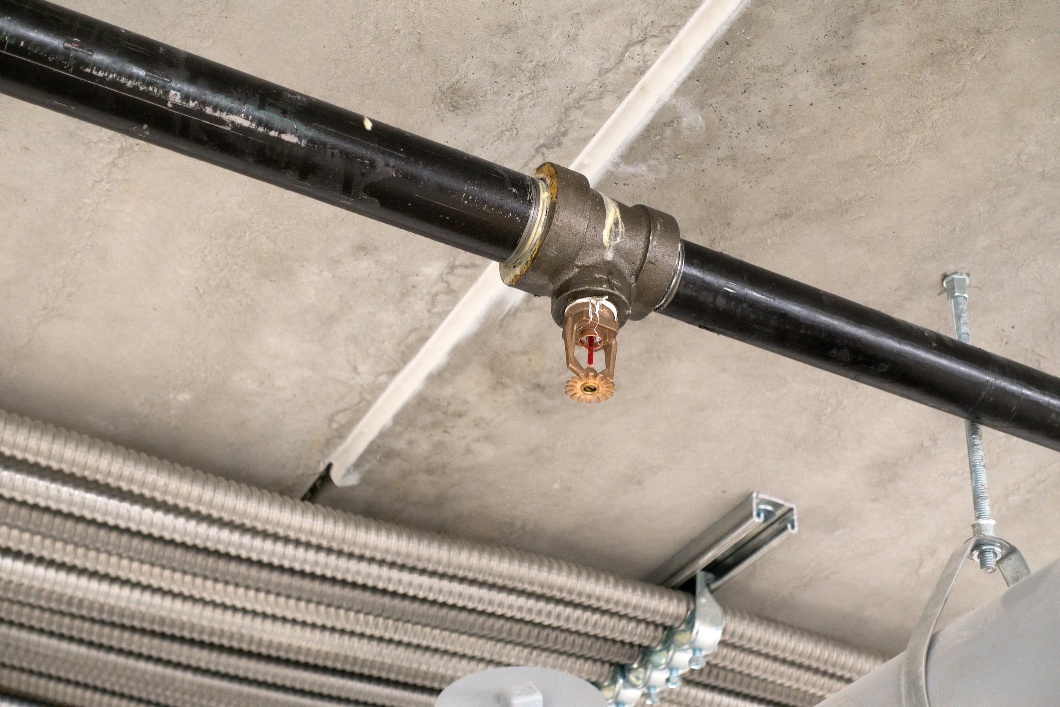It is highly likely that your building or facility has a sprinkler system in place as part of your fire protection equipment. These automatic systems often act as the first line of defense if the worst happens, and a fire does indeed break out.
With sprinklers forming such a vital part of your fire safety plan, it’s essential to get them regularly inspected and tested to make sure they are performing optimally. If you are a business owner or facilities manager, you may be wondering how often you should get your sprinkler systems inspected and tested.
Here is a concise summary of the fire sprinkler inspection requirements.
How Often Should Fire Sprinklers Be Inspected?
Sprinkler systems are made up of a multitude of different parts, which encompasses all manner of switches, gauges, and pipes. These need inspecting at various intervals to make sure they are fit for purpose.
Below are the recommended inspection intervals of the different elements of a sprinkler system:
Monthly
The gauges are a vital aspect of any sprinkler system, and therefore they need to be inspected in dry, pre-action and deluge systems as much as once a week to make sure they are fit for purpose. The wet pipe gauges can go a month without requiring another inspection.
Quarterly
Once every three months, you’ll need to have more extensive inspections carried out which incorporate water flow alarm devices, valve alarm devices, control valves, signal devices, hydraulic nameplates, and fire department connections.
Annually
This is where inspections will move on to looking at the pipework and fittings, hangar/seismic bracing, signage and the sprinklers themselves.
Every five years
It is recommended to thoroughly inspect all internal pipework relating to your sprinkler system, check for any blockages and service where necessary.
How Often Should Fire Sprinkler Systems Be Tested?
Tests are similar to inspections; however since inspections are primarily visual checks, testing involves actual physical use of the equipment to test that it works as intended. As a result, testing is carried out at less frequent intervals than inspections are.
Quarterly
Every three months it is advisable to run a physical test on all fire sprinkler mechanical devices.
Semi-Annually
Every six months, vane and pressure switch type devices should be tested.
Annually
Every year there should be a complete test of your fire sprinkler system. Technicians will physically check every element of your system, from water flow and fire pump tests right through to alarm tests and trip tests of dry pipe, deluge and pre-action valves.
Every five years
At this point, you should have precautionary tests on any sprinklers exposed to either high temperatures or harsh conditions. Gauges on all types of sprinkler systems should also be tested and/or replaced at this juncture.
Every 10 Years
Dry sprinkler systems should be tested and/or replaced after ten years. Fast-response sprinklers should be tested after 20 years and at 10-year intervals after that, and standard sprinklers should be tested after 50 years and then at subsequent 10-year intervals.
What Else Should You Expect During the Process of Testing and Inspection?
Not only should you instruct fire protection professionals to carry out the above checks within the timeframes mentioned, but you should also expect your outside technicians to provide additional support.
They should point out to you any conditions that could compromise the performance of any mechanical or electrical components of the system for starters. Also, all good fire testing and inspection companies should also provide a full report of works undertaken by their technicians with explanations of recommendations for corrective actions to be compliant with fire standards.
Wrap Up
Any type of fire sprinkler system is integral to your fire safety plan. Therefore, you need to make sure that it your system is regularly inspected and tested to make sure it is ready should disaster strike.
Make sure to hire a company that provides qualified personnel to undertake these tasks for you, and use their reports to monitor and improve your sprinkler performance continually.








